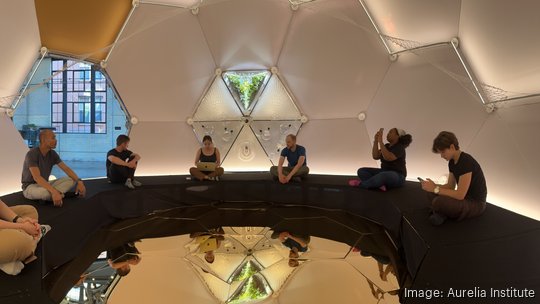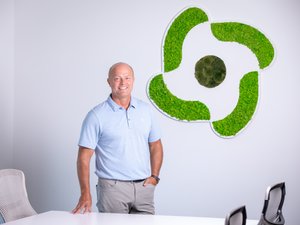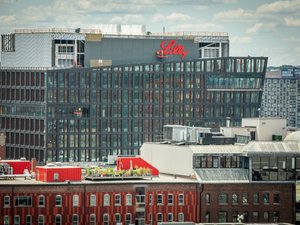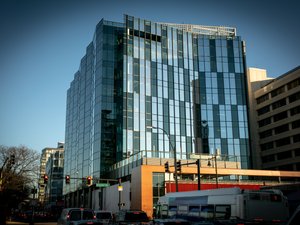
Aurelia Institute, a spinout from MIT, has debuted its first scale model of its self-assembling space habitat, TESSERAE.
The Cambridge-based company, co-founded by Ariel Ekblaw, Sana Sharma and Danielle DeLatte, has been working on a way to develop a habitat in space without the need for physical labor and construction. The answer has arrived — in the shape of a soccer ball.
The TESSERAE scale model (the acronym stands for Tessellated Electromagnetic Space Structures for the Exploration of Reconfigurable, Adaptive Environments), on display until Aug. 6 at the co-working space the Substation in Boston, shows what the habitats will look like once the Aurelia Institute fully realizes its designs. For now, the TESSERAE panels being tested are no bigger than a kitchen refrigerator magnet.
The habitat is made out of large hexagonal and pentagonal panels, which come together with the help of what Ekblaw calls electro-permanent magnets. Each ball is made up of 32 pieces: 20 hexagons and 12 pentagons, each about 30 feet wide.
According to Ekblaw, the panels will be deployed from a machine the way candy comes out of a Pez dispenser. To begin the building process in space, the magnets on each panel will pulled towards each other and form an individual TESSERAE habitat.
“There's no astronaut that has to go out and help them. There's not even a need for a robotic arm. The tiles are completely decentralized and autonomous,” said Ekblaw. “So they can dock together on their own, and they have some special sensing technology inside that helps them pick up on the fact of whether they bonded correctly.”
So far, Aurelia has conducted two tests on small-scale panels on the international space station and will conduct its third test in 2025. In the meantime, the team at Aurelia is working on developing the large-scale tiles, each one with edges that are about five feet long.
Getting to space isn’t cheap. According to Ekblaw, each test costs between $200,000 and $500,000. To raise funds for trips to the ISS — and the eventual tens of millions of dollars Ekblaw says Aurelia will need for its full-size models — the company works with NASA, philanthropic partners, and corporate sponsorship.
Ekblaw wants Aurelia Institute to be seen as a Boston endeavor. Ekblaw did her PhD at MIT, founded Aurelia in Boston in 2021 and has its headquarters in Central Square in Cambridge. Currently, Aurelia has fifteen full-time employees with an additional five summer interns bringing them up to 20 employees for the summer.
"We really are very much a Boston-based aerospace entity," said Ekblaw.
In addition to developing a self-assembling habitat, the Aurelia Institute also does outreach, policy, and education. Every spring, the company charters a zero-gravity flight and has been active in the DC government policy space.
“We're trying to think about how to be good stewards of the space commons, both to hold ourselves accountable as we start to put objects in orbit. How do we make sure we're making sure that we're responsible about not contributing to space debris?” said Ekblaw.
In an earlier version of this story, Ariel Ekblaw's first name was incorrect.







